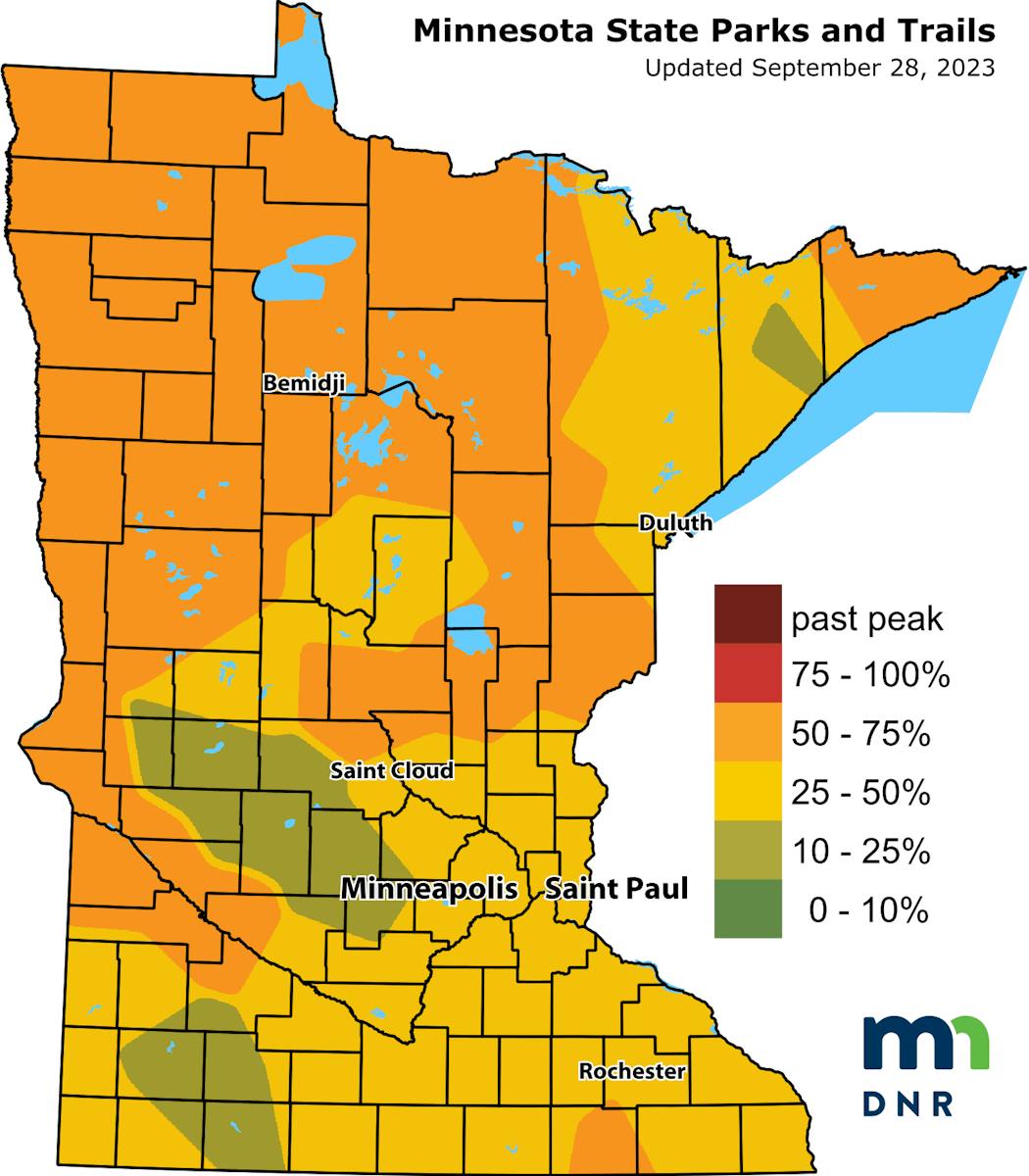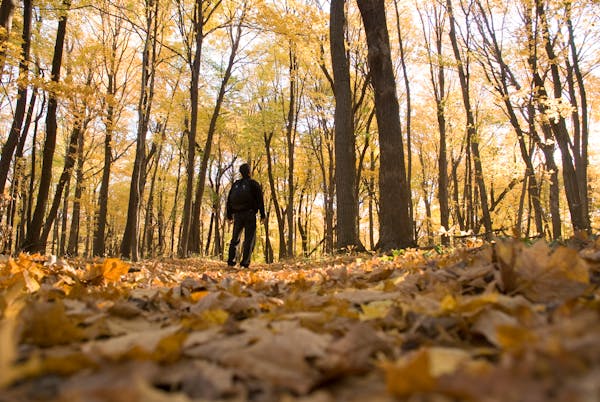It's almost prime time for fall colors in Minnesota, where much of the northern area is nearly at peak, according to the Department of Natural Resources' Fall Color Finder.
Check back weekly with startribune.com for more tips on top destinations for fall foliage.
When should we see peak fall colors?
It varies depending on several factors, including climate, weather conditions and geographic location. In Minnesota, peak fall colors typically appear from mid-to-late September through mid-October.
Some parts of Minnesota are seeing color changes already and several others, particularly in the northern part of the state, are expected to hit peak colors early in October. But wooded areas for migrating birds and leaves are changing slowly in southwestern Minnesota, which is expected to see peak fall colors at the end of October.
What causes fall colors?
According to the state DNR, leaves change color — yellows, oranges, reds and browns — owing to four main groups of biochemicals: chlorophyll, carotenoids, anthocyanins and tannins. They each have their own varying pigments and chemistry, producing slight differences in color from tree to tree, even from one leaf to the next.
Where to go this weekend for the best fall colors
Zippel Bay State Park, between Warroad and Baudette: Located on the Lake of the Woods, this park offers a "gorgeous" array of fall colors. While some areas have passed their peak, others remain "extremely" green, making this year a tough one to rate, according to the DNR.
As you venture closer to the lake, you will notice spots where almost all the leaves are on the ground due to recent storms. To get a complete experience, the DNR recommends a drive through the area.
Judge C.R. Magney State Park, near Grand Marais: This time of the year offers the best opportunity to go for a walk in this state park. You'll be greeted by the sight of birch trees turning color. The undergrowth of moose maple, sour sarsaparilla, ferns, grass, and others are expected to peak soon.
Tip: The salmon have started their run in the Brule River and they are biting, the DNR says.
Lac qui Parle State Park, near Montevideo: Situated in the town of Watson in Chippewa county, this state park — which gets its name from the Dakota language, meaning "lake that speaks" — is undergoing a captivating transformation. The native prairie grasses are transitioning to gold, while the native trees such as cottonwood are starting to change.

Lino Lakes considers temporarily halting proposed development that includes a mosque
Neal: A legend exits the Twin Cities pro boxing scene

Hennepin County commission primary narrows Edina-area seat to two

Lakeville teachers file intent to strike, picket outside school board meeting



